|
|
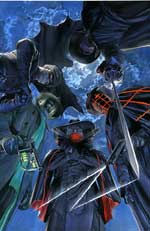 |
Written by Chris Roberson, the first issue will feature interior artwork by Alex Ross, who has contributed covers for The Shadow, the Spider, the Green Hornet and Zorro, all of whom are featured together in the series.
Featuring The Shadow teaming up with the 1930s-era Green Hornet and other pulp-style heroes is a rare treat. Even in their heyday, these characters never crossed paths, despite sometimes sharing the same radio network or pulp publisher. It’s quite possible the first time it happened was in the 1960s, when the Green Hornet guest-starred on the Batman TV series. In the late 1980s, Doc Savage and The Shadow met for the first time in a four-part story published by DC Comics. Dark Horse would reunite them in a two-issue story a few years later.
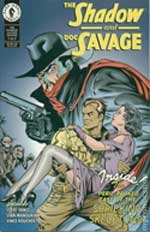 |
The Shadow series ran for 12 issues. Eventually I started reading some of his adventures when they were republished in paperback form, featuring covers by Jim Steranko.
This in turn led me to LPs of the radio program, courtesy of my local public library. Also available were episodes of other popular radio heroes such as Sam Spade and the Green Hornet. I was somewhat familiar with the Green Hornet thanks to reruns of the 1960s TV series starring Van Williams.
During the Great Depression, financially-strapped families could enjoy an evening’s entertainment together in the living room. During war-time, many wives and parents followed the news from overseas, keeping track of their loved ones fighting the Axis, thanks to radio. Such programs continued well into the 1950s, until it became overshadowed by television and radio switched to a music format.
In its earliest days, radio was an advertising medium. Programs were developed by advertising firms to sell product by sponsoring a specific radio program. And when a company pulled it’s sponsorship for whatever reason, said program was forced to go searching for a new sponsor, while the company might choose to sponsor a whole new program altogether.
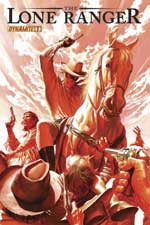 |
At first, programs were generally performed and broadcast live, and then again a few hours later for those on the West Coast. This was especially true for variety programs that featured a live audience. But quickly, producers hit on the idea of pre-recording the shows onto records. Once broadcast, these “transcription discs” were then filed away, and occasionally pulled out and rebroadcast in the event of an emergency.
During World War II, war-time rationing and limited resources resulted in many of these discs being recycled. As a result, many of the recordings were lost. However, enough have survived to create a healthy fandom of old-time radio (OTR) communities on the Internet who trade in radio shows. Not only has it made it easier for fans to share and swap bootleg recordings of their favorite programs, but it has also enabled such companies as Radio Spirits and others to increase their presence in a rather narrow market.
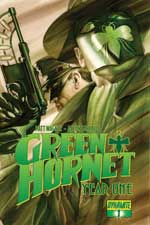 |
According to an interview at cbr.com, writer Roberson said the story concerns a political group, the Party of Justice, which sweeps New York elections, taking control of the state from the governor’s office on down. In the wake of this take-over, an almost fascist police state is established, beyond the control of the federal government. This premise was originally introduced in the pages of The Spider, a 1930s pulp starring a vigilante crime fighter similar to The Shadow.
However, it also has its root in real life. Not only did it mirror on a smaller scale the events in Germany at the time, it sounds as it is in a way related to events that took place in Detroit in the mid-1930s.
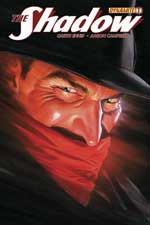 |
Roberson’s story will feature Dynamite’s lineup of pulp-style heroes, which includes The Shadow, the Spider, Miss Fury, Black Bat, Zorro, Green Hornet and more. Masks is scheduled to make its debut in November.
© Copyright 2002-2019 by Toon Doctor Inc. - All rights Reserved. All other texts, images, characters and trademarks are copyright their respective owners. Use of material in this document (including reproduction, modification, distribution, electronic transmission or republication) without prior written permission is strictly prohibited.

